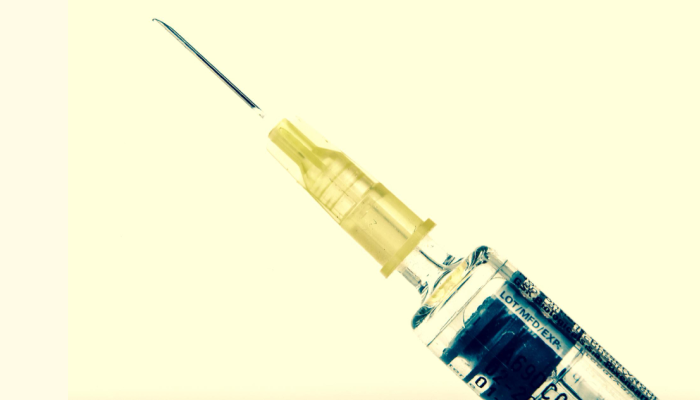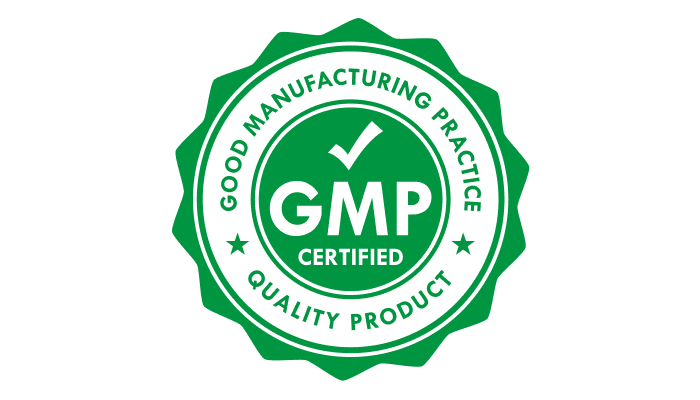by Amit Mohite
6 minutes
The Future Of Pharmaceutical Water: Purity, Compliance & Sustainability Trends For 2025
Explore the trends of water in the pharma industry shaping its management, from compliance to sustainability & efficiency.

In a spotless pharmaceutical facility, stainless steel pipes snake across the ceiling, carrying what might be the most important ingredient in the entire operation—water. Not just any water, but water so pure that even a single microscopic contaminant could mean the difference between a life-saving drug and a costly recall.
For decades, pharmaceutical water systems have quietly worked behind the scenes, ensuring that medicines are safe, effective, and compliant with the strictest global standards. Yet in 2025, this hidden backbone of drug manufacturing is undergoing a transformation.
Rising global demand, tightening environmental rules, and rapid advances in technology are reshaping how water is purified, stored, monitored, and reused. This is the story of how an invisible resource is becoming the center of innovation—and why the future of pharmaceutical water systems will determine the pace, safety, and sustainability of the industry itself.
Advanced water system pharmaceutical industry design is becoming a competitive differentiator, allowing facilities to meet global regulatory compliance while optimizing operational efficiency.
The Role of Pharmaceutical Water in Drug Manufacturing
Pharmaceutical water isn’t just about keeping things clean; it’s a foundational component of drug manufacturing. It plays a vital role in processes like formulation, cleaning production equipment, and even acting as a solvent in drug compounds.
Why is it so important? Any contamination in the water can compromise the safety and efficacy of medicines. This is why water system in pharmaceutical industry is one of the most heavily regulated aspects of the pharmaceutical industry. Clean water doesn’t just ensure compliance—it safeguards patient health.
Optimized pharmaceutical water systems ensure that every stage of production, from API dissolution to final product formulation, maintains strict quality standards.
Water Grades in Pharmaceuticals

Pharmaceutical water systems isn’t one-size-fits-all. Different applications require specific grades of water to meet certain standards. The three primary types are:
- Purified Water (PW): Used in general manufacturing processes and cleaning. It requires stringent filtration, but not the level of sterilization demanded by other types.
- Water For Injection (WFI): As the name suggests, this is water used for injectable drugs. It undergoes more extensive treatment, including distillation or reverse osmosis, to ensure it’s virtually free of contaminants.
- Sterile Water For Inhalation or Irrigation: This is used in direct patient applications and must meet specific sterility and particulate limits.
Each grade has unique preparation methods to match its intended use. For instance, WFI must meet microbial and endotoxin limits to ensure the safety of patient injections. Implementing a robust water system in pharmaceutical industry helps maintain the quality of all water grades, reducing risk of contamination and improving compliance.
Regulatory Standards and Compliance Requirements
Pharmaceutical water systems quality standards differ globally, but the goal is the same: consistency and safety. Leading organizations like the United States Pharmacopeia (USP), European Medicines Agency (EMA), and World Health Organization (WHO) set stringent requirements.
Compliance means manufacturers must adhere to criteria like:
- Meeting microbial load and endotoxin limits.
- Using validated systems to produce and store water.
- Regularly testing and monitoring quality to prevent deviations.
Non-compliance isn’t just a regulatory risk; it can lead to recalls, financial losses, and patient harm. Staying aligned with global guidelines is non-negotiable, especially for companies operating across multiple regions.
A modern water system pharmaceutical industry design ensures consistent adherence to USP, EMA, and WHO guidelines, making global distribution safer and more reliable.
Emerging Technologies in Pharmaceutical Water Systems
As demand grows and regulations tighten, technology is stepping up to make pharmaceutical water systems more efficient, sustainable, and reliable.
Advancements in Reverse Osmosis and Nanofiltration
Reverse osmosis (RO) has long been a workhorse for pharmaceutical water systems, but newer innovations are making it even better. Modern RO membranes are designed to filter out impurities while consuming less energy.
Nanofiltration is another rising star. With the ability to remove specific contaminants like salts or organic materials at a lower operational cost, it’s becoming a go-to solution for pre-treatment and purification. These advancements aren’t just boosting water quality—they’re slashing operational costs.
By integrating advanced water system in pharmaceutical industry technologies like RO and nanofiltration, facilities can achieve higher throughput while maintaining stringent compliance.
Automation and Smart Monitoring Systems
Today’s pharmaceutical water systems are smarter than ever. Automation, powered by Internet of Things (IoT) devices and artificial intelligence, allows real-time monitoring of water quality, pressure, and flow.
With these technologies, operators can track every step of the process from their smartphones. Predictive modeling also helps prevent system failures by identifying issues before they happen. This level of precision reduces downtime and ensures consistent compliance.
Sustainable Water Treatment Approaches

Eco-conscious water treatment is gaining traction. Recycling systems, for example, capture wastewater, treat it, and reuse it within the facility. This reduces freshwater consumption significantly.
Greener treatment technologies, such as electrodeionization (EDI) and solar-powered desalination systems, are also helping reduce the environmental footprint of water purification processes.
Sustainable pharmaceutical water systems not only cut costs but also support ESG goals, enhancing corporate reputation and environmental stewardship.
Pharmaceutical Water Market Outlook 2034
The pharmaceutical water market is on an upward trajectory. Valued at $37.1 billion in 2023, it’s projected to grow at a CAGR of 8.3% between 2024 and 2034. By the end of 2034, the industry is expected to surpass $89.9 billion.
This growth reflects not only increasing global demand for pharmaceuticals but also the adoption of advanced water management technologies. Companies that invest in innovation today will be the ones leading this rapidly expanding market tomorrow.
Investments in a modern water system pharmaceutical industry infrastructure are critical for companies seeking leadership in this expanding market.
Key Trends Driving the Future of Pharmaceutical Water
The future of pharmaceutical water isn’t just about better technology—it’s about addressing broader industry and environmental challenges.
Focus on Sustainable Practices
Reducing water wastage is becoming a top priority. The pharmaceutical industry is one of the largest consumers of purified water, and the spotlight is now on minimizing this impact.
One example of progress is the implementation of closed-loop systems, which recycle water during manufacturing. These systems aren’t just eco-friendly; they also cut costs by reducing raw water and wastewater treatment needs.
Integration of Digital Twins and Predictive Maintenance
Digital twins—virtual models of physical systems—are revolutionizing pharmaceutical water systems. By simulating how a system operates, manufacturers can test scenarios and optimize performance without risking real-world downtime.
When combined with predictive maintenance, which uses AI to forecast repairs, this approach extends system lifespans and ensures equipment runs at peak efficiency.
Globalization and GMP Challenges
Operating in global markets brings unique challenges, especially when it comes to maintaining Good Manufacturing Practices (GMP). For instance, a system compliant with USP standards may not meet EMA or WHO requirements.

To overcome this, manufacturers need adaptable systems that can meet diverse international standards. Investing in staff training and cutting-edge monitoring tools also helps navigate the complexities of global compliance.
A well-designed water system in pharmaceutical industry ensures global compliance and enables safe international distribution.
Challenges and Opportunities in the Future of Pharmaceutical Water
The road to the future isn’t without bumps. However, the challenges ahead often open doors for innovation.
Overcoming Cost Barriers
Upgrading to newer technologies can be expensive, especially for smaller manufacturers. Initial investments for systems like digital twins or automated monitoring can be steep.
That said, the long-term savings are undeniable. Governments and regulatory bodies are also offering incentives for companies adopting energy-efficient and sustainable processes.
Ensuring Long-Term Compliance
Staying compliant with evolving regulations is an ongoing battle. Agencies continuously update their guidelines, and manufacturers risk penalties if they don’t keep up.
Regular audits, system upgrades, and robust training programs for employees can help companies stay ahead of the curve.
Conclusion
The journey of pharmaceutical water—from source to production line—is no longer just about meeting purity standards; it’s about rethinking the entire system for a smarter, greener, and more resilient future.
Emerging technologies like membrane-based WFI production, digital twins, and zero-liquid-discharge systems are proving that compliance and sustainability can go hand in hand.
As pharmaceutical companies face mounting pressure to deliver safe medicines faster while minimizing environmental impact, the mastery of water management will be a decisive factor.
The facilities that invest today in intelligent, sustainable, and globally adaptable water systems will not just meet regulations—they’ll set new benchmarks for trust and innovation in healthcare.
In the end, the future of pharmaceutical water is about more than purity—it’s about protecting patients, preserving resources, and powering the next generation of life-saving breakthroughs.
FAQs
1. What is the role of pharmaceutical water systems in drug manufacturing?
Pharmaceutical water systems play a crucial role in maintaining the safety and efficacy of medicines. They are involved in formulation, cleaning production equipment, and acting as solvents in drug compounds. Water quality is heavily regulated to ensure patient safety and compliance with global standards.
2. What are the different types of water used in the pharmaceutical industry?
In the pharmaceutical water systems, the primary types of water include Purified Water (PW), used for general manufacturing processes, Water For Injection (WFI), used in injectable drugs, and Sterile Water For Inhalation or Irrigation, used for direct patient applications. Each type undergoes specific treatment to meet the required quality standards.
3. How do pharmaceutical water systems ensure compliance with regulatory standards?
Pharmaceutical water systems must comply with stringent guidelines set by organizations such as the United States Pharmacopeia (USP) and the World Health Organization (WHO). Manufacturers must adhere to microbial load and endotoxin limits, use validated systems for production, and regularly monitor water quality to prevent deviations and maintain compliance.
4. What emerging technologies are improving pharmaceutical water systems?
Advancements like Reverse Osmosis (RO), Nanofiltration, automation, smart monitoring systems, and digital twins are improving pharmaceutical water systems. These technologies help optimize performance, reduce operational costs, enhance water quality, and ensure compliance with regulations.
5. Why is sustainability important in pharmaceutical water management?
Sustainability is critical in pharmaceutical water systems due to the increasing global demand for water. Companies are adopting eco-conscious water treatment solutions such as recycling systems and solar-powered desalination. These methods help reduce freshwater consumption, minimize the environmental impact, and ensure the sustainability of pharmaceutical production.




